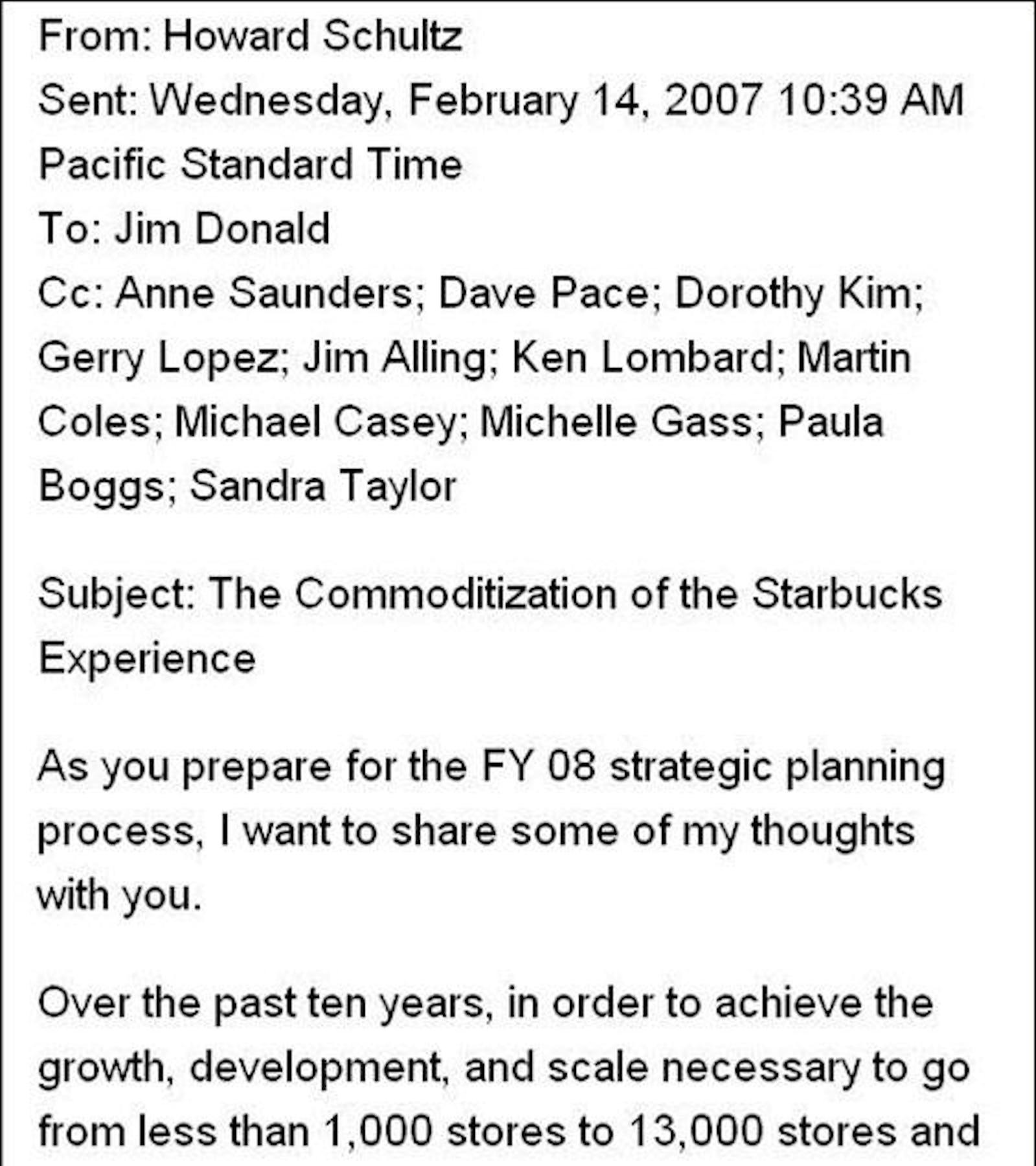How to Write a Business Memo (With Examples)

“A memorandum is not written to inform the reader, but to protect the writer,” as former US Secretary of State Dean Acheson quipped satirically, taking a dig at governmental bureaucracy. His actual point is that whilst memos should absolutely be written to inform readers, they often provide little to no value.
Ineffective memos arise when those writing haven’t truly grasped the actual purpose of this specific kind of correspondence. It’s crucial to know what situations merit a memorandum, as well as the associated rules. Otherwise, you’re just adding to the pile of pointless paperwork.
Becoming adept with this type of internal communication is an essential skill, one which can aid you in many aspects of work and career. If you’re looking to brush up on how to write a business memo, we’ve got you covered.
3 of The Greatest Business Memos of All Time
An immeasurable amount of memos are sent daily, so of course there are plenty of great examples out there. Some rise above the rest, however, showing precisely how informative, persuasive or inspiring a simple page or two can be.
Some memos even become cultural documents, a still-shot into the specific time and place of a company or industry.
Here are our entries into the memo hall of fame:
1. Bill Gates on Surfing the Internet Tidal Wave

In 1995, aka the infancy of the digital world, Microsoft CEO Bill Gates sent out an executive memo on an impending internet tidal wave.
Aside from being an interesting glimpse into history, this document serves as an outstanding example of what a memo is designed to do.
“In this memo, I want to make clear that our focus on the Internet is crucial to every part of our business,” reads an introductory paragraph. Each section is tied together to this central theme, making the memo a relevant, coherent discussion that actually adds value to recipients.
The text is filled with technical information presented (crucially) in context. Gates first touches on the conception of the internet, before moving along to subheadings ‘The Internet Today’, ‘Competition’, ‘Next Steps’, and finally ‘The Future’.
And how does Gates finish up? Exactly as he should, courteously leaving the door open for suggestions: “I am looking forward to your input on how we can improve our strategy to continue our track record of incredible success.”
2. Howard Schultz on the Overexpansion of Starbucks

A year after his return as CEO of Starbucks, Howard Schultz penned a memo to discuss the consequences of an overly-ambitious strategy, i.e. the rapid rate at which the company grew. Masterfully, it takes only two paragraphs for us to gauge exactly how this document is going to read, an absolute must for a memo hall of famer.
He details specific business decisions that came under the previous strategy, providing his opinions on the reason they went ahead and the results. The writer does not scold specific people, nor does he smugly look back in hindsight and say “Why on Earth did they do that?”
Instead, the memo follows, “Now that I have provided you with a list of some of the underlying issues… let me say at the outset that we have all been part of these decisions.” By presenting his thoughts this way, he’s far more likely to engage his readers, which is obviously a prerequisite for them to offer further insight and resolutions.
It’s just two pages long, yet Schultz manages to go through the company’s largest problem, unite his workers and inspire them to “push for innovation and do the things necessary to once again differentiate Starbucks from all others.”
3. The YouTube Investment Memo

As part of the Viacom International Inc. v. YouTube, Inc. 2010 court case, an internal memo outlining the YouTube investor pitch was disclosed. It just goes to show that excellent memos come in all shapes and sizes, providing you know what you’re doing.
The document is expertly formatted, rich with pertinent information, attractive visual data, and more bullet points than an arms factory. Once again, we see details in appropriate context, so that readers better understand the weight of the ideas explored.
“Video is a natural next step, and YouTube is well positioned to capture the lead,” one section reads. Whether investors believed that or not on the day, this memo serves as the prime example of how to structure arguments and supporting data, as well as proof for the immense versatility of this kind of business writing.
Using Friday Posts to Write a Business Memo
If writing a memo still sounds like a daunting task, there are various tools you can use to make the process more convenient. Certain word processors feature business memo templates, whilst countless samples can be downloaded from elsewhere online.
Alternatively, teams and businesses already using Friday as their digital communication hub use Posts as an integrated memo writing solution.
Friday is a company communication tool that is your home for the most important things
With Posts, you can make company announcements, and bring team discussion out of the noisier team chat apps.
It's the perfect way to communicate internally--and asynchronously. See the video below for a look at how it works.
Use Friday for free. No credit card required.
What are the Different Types of Memos?
The word ‘memo’ is not particularly intimidating at first sight. After all, it does sound like some helpful robot in an upcoming sci-fi franchise. One the other hand, ‘memorandum’ seems a little more elevated, which illustrates the huge difference between formal and informal writing.
The particular words, grammar, and stylistic conventions used to express formality is known as register in the writing world. Aside from being sensitive to that, it’s important to understand the various types of memo you can create and their respective characteristics.
1. Progress Memo
Progress memos are found everywhere, since companies regularly use them to report on specific project status as well as quarterly/annual performance. Since progress memos are created so frequently, organizations usually maintain a template and guidelines for better continuity and efficiency.
In many cases, progress reports and memorandums are used in conjunction with one another. However, it is possible to save time by writing the weekly status report as a progress memo. Above all, progress memos provide information, though they are also an opportune place to make requests or suggestions that could aid your project.
2. Suggestion Memo
Managers or executives solicit suggestion memos from employees as means to resolve specific problems, or more generally gain insight into the workings of their organization. These types of memo are immensely valuable as they empower workers to think creatively, which can drive innovation as well as expose inefficiency.
When you’re offering a solution to a problem, you’ll need to include any relevant research to support your ideas. More general advice can be supported by personal experience, too. Suggestion memos make solid arguments regarding future actions, so they should be written analytically and authoritatively.
3. Request Memo
Request memorandums are composed as a way of persuading others to approve what you’re asking for. For instance, convincing your boss to increase a project budget. You should be clear and direct when making a request, where the rationale behind the proposal is easy to follow.
Any resources and expenses required should also be made apparent. These types of memo demand the use of persuasive language, which primarily means giving plenty of benefits for approving the request.
4. Other
There are various other reasons for drafting up a memo, including detailed meeting notes, team updates, company policy changes, technical explanations, and formal communications. Considering that memorandum literally comes from the Latin for remember (memorare), they are used to create an official record of any subject worth revisiting,
Parts of a Memo
Even though memos aren’t all created equal, there are universal guidelines of how you break down such documents. It’s useful to think of your memo in terms of the following elements:
1. Introduction
Just as in fiction writing, the introduction is the opportunity to set the scene. For memos, this relates your header information, including names of recipient and sender, date posted and a very brief description of the statement or purpose.
Say you’re making a request to attend a conference that you believe is valuable to you work. “Conference” is a poor heading, largely because it’s not clear what’s being discussed. Alternatively, “Attending Expo2022 Conference for Management Strategy” tells your reader the initial details they need for the text.
Quick Tips:
- Whilst journalists are told to keep their headers short and snappy, memo titles should be written in a way that makes the content immediately obvious.
- As there is a clear standard for memo introduction, it’s not the place to exercise your creative skills. Include the pertinent information only.
- Whilst personal memos can skip many header formalities, company-wide documents must have appropriate salutations.
2. Main Body
It is absolutely paramount to include background context of the memo subject. For instance, a suggestion memo is typically centered on a problem that needs to be resolved. When you don’t have preliminary context, your arguments appear weaker, thus you should begin by evaluating the question, rather than just presenting an answer.
Say your boss asks for your suggestions on effective workplace communications, presumably wanting to streamline internal messaging as means to increase efficiency. A well-crafted memo will begin by addressing the issue, which could involve comparing your company against organizational averages, outlining main causes for communication issues, and presenting the best data for driving your suggestions.
Quick Tips:
- It’s important to periodically subhead your main body, so that readers can more easily follow your train of thought.
- There’s no need to write out all the analysis in full when you can reference it. You can provide any reports, graphs, policies and minute notes as attachments if necessary.
- Although the main body is the largest element of your memo, it’s not a license to go on for pages and pages. Be as concise as the subject allows.
3. Summary (and Sign-off)
A summary is essentially the restating of key information in a pleasing conclusive manner. You first begin by consolidating your main points, which reminds the recipients what they should take from your memo. Next, provide recommendations on the next stage, which allows readers to turn your ideas into actionable steps.
With your closing remarks, you also explain how others should contact you on the subject. You may write something general, like “Let me know if you have any questions/ideas,” or preemptively set a time by saying “I will contact you on Friday at 2pm.” Though only a line or two, this element is highly valuable as it promotes further discussion.
Of course, you’ll need to sign off, which you can do by once again including your name and title, along with your full contact information. Whether or not you feature a signature will depend on the formality of the memo. For example, having the business owner email signature shows professionalism.
Quick Tips:
- The main body of the memo has already done the heavy lifting, so keep your summary as short as you can.
- Just as with story writing, good endings leave readers satisfied. Create a succinct conclusion that tells the recipient exactly what they have gained from the memo.
- As the natural end of your discussion, a memo summary must include a call to action that enables recipients to actually use your document.
4. Supplementary Material
Any references you’ve used throughout the memo, along with the necessary documentation a recipient will need to go forward, is provided at the end of your writing. Even if you embed visual aids in the memo, it’s best to include them in this section too.
Quick Tips:
- Don’t include irrelevant attachments simply to bolster a weak point. It’s called supplementary for a reason, which is that the material actually enhances your ideas.
- You won’t need to include everything you’ve mentioned as any attachment, though it’s good practice to cite anything that may be later useful.
- Supplementary material isn’t just statistics and reports. Prior communications and past memos can also be added as attachments to place your writing within context.
How to Write a Memo Worth Reading
A business memo is an exceptionally versatile communication, so you can easily use them to update your boss on progress, make a brilliant suggestion, and request extra resources all in one week. Regardless of what you’re writing for, the key determiners for whether a memo is worth reading or not is clarity and relevance.
With that in mind, here are some extra tips on how to write a business memo:
- Sophisticated, not Pretentious: Although a memorandum is, by definition, a formal business document, you don’t need to make them over-complicated just to appear competent. It’s true that adhering to certain standards helps your credibility, yet sounding too rigid disengages readers, whom likely already have a lot of reading to get through.
- Appropriate Tone: It may seem obvious, but many still struggle to follow proper tone when writing up business documents. The audience of a memo will determine the tone you should use, but so too does the subject. If you’re sharing serious news, avoid lightening the mood with a joke or emoji. Conversely, a memo about an upcoming social event can take a much friendlier tone.
- Precise but Concise: A memo is neither a novel nor a riddle, so keep it clear and brief. Begin with a subject line that conveys critical information and nothing more, following this parameter throughout the entire process. Remember that a memo is typically a page or two in length, so keep an eye on not just what you’re saying, but how much, too.
- Strict Memo Format: Whilst you can get creative with your content and wording, it’s paramount that memos follow a strict format. There are always at least four headings at the top of the memo (To, From, Date, Subject), with Company sometimes added as the fifth. Any following content is written as single-spaced text, arranged into double-spaced paragraphs and headings.
Final Words on How to Write a Business Memo
Although memorandums might seem scary, they really aren’t. Fundamentally, they are a means of expressing oneself in a very particular fashion. As soon as you get used to the rules, memos can be used for innumerable business applications. For instance, long-term clients may feel more comfortable with a memo rather than a business letter.
In any case, business memos are an essential tool in the professional communication kit, allowing an individual, team or organization to convey themselves respectfully and eloquently. Ditch never-ending email threads for more productive channels and your team is sure to get the memo.


